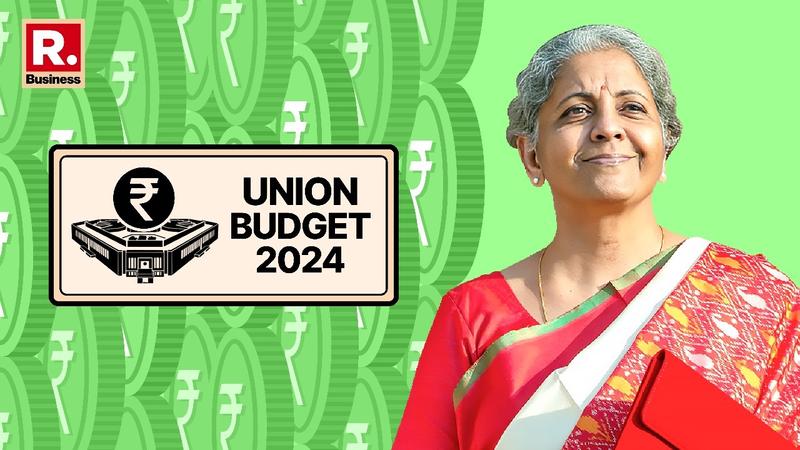Published 19:40 IST, July 23rd 2024
Budget 2024: Why government chose to freeze Capex despite calls for Increase?
According to analysts, India's full Budget 2024-25 highlights a balanced approach to sustaining economic growth through increased capex.

Capex freeze: Beating almost all the estimations and speculations, Finance Minister Nirmala Sitharaman in her 88-minute long budget speech kept the capital expenditure the same at Rs 11.11 lakh crore as estimated in the interim budget. Compared with the capex allocation of Rs 9.5 lakh crore in FY24, the current capex is almost 11.1 per cent higher.
In contrast to the expectations of experts of increasing the capex by Rs 40,000 to 60,000 crore, considering the extra fiscal headroom induced by RBI dividend at Rs 2.1 lakh crore in FY24, against the anticipated Rs 60,000 crore. However, the government kept the public spending high while keeping the capital expenditure the same as estimated in the interim budget. However, the current capex allocation is the highest in the last 10 years.
Last fiscal year, India set a record capex target of Rs. 10 lakh crore, a 37.4 per cent increase from the revised budget estimate of Rs. 7.28 lakh crore for FY23. This was nearly three times the Rs. 3.11 lakh crore capital expenditure in FY20 when Prime Minister Modi secured a second term. India's capex figures for FY21 and FY22 were Rs. 4.1 lakh crore and Rs. 5.9 lakh crore, respectively.
“The FY25 budget underscores the Government of India’s sustained emphasis on capital investments, maintaining the capital expenditure at Rs 11,11,111 crore, which represents 3.4 per cent of the GDP, consistent with the interim budget,” noted Arti Roy, Associate Director, CareEdge Ratings. “This strategic allocation is expected to drive infrastructure development, thereby supporting the demand for commercial vehicles which is currently facing challenges and likely to de-grow by 3-6 per cent in this fiscal year.”
According to analysts, India's full Budget 2024-25 highlights a balanced approach to sustaining economic growth through increased capex while ensuring fiscal consolidation. The strategic emphasis on infrastructure is expected to drive long-term growth, job creation, and private-sector investment, positioning India closer to its economic aspirations. The government also emphasizes fiscal discipline, reducing the fiscal deficit target to 4.9 per cent of GDP from 5.1 per cent in the interim budget. New schemes aimed at creating over 2 crore new jobs underscore the budget’s focus on employment generation.
Time For Private Capex To Take Over
Also, analysts have been cautioning time and again that the heavy lifting by the government in the economy is not sustainable in the long run. The government's continuous efforts were until animal spirits were unleashed in India Inc. led to crowding in of private investment riding on the back of record capex. As private capex is in fairly good shape, it is the right time for the government to pull the break on the capex.” In fact, in a press conference yesterday, Chief Economic Advisor, V. Anantha Nageswaran also highlighted that the private capex has recovered from the Covid-19 shocks. He also added that India is in the middle of increasing private capex aided by the govt capex push.
India is experiencing a significant upcycle in private capital expenditure, bolstered by robust government spending, according to the Economic Survey 2023-24. The survey, referencing data from the National Accounts Statistics 2024, released by the Ministry of Statistics and Programme Implementation (MoSPI), reveals a substantial increase in Gross Fixed Capital Formation (GFCF) by private non-financial corporations, which surged by 19.8 percent in FY23.
"There are early signs that the momentum in private capital formation has been sustained in FY24," the survey noted, emphasizing the continued positive trend in private investment. GFCF has become a key driver of economic growth, with its share of nominal GDP steadily rising, underscoring its importance in the nation's economic landscape.
The Economic Survey added that data provided by Axis Bank Research showed that private investment across a consistent set of over 3,200 listed and unlisted non-financial firms grew by 19.8 percent in FY24. "Gross Fixed Capital Formation has emerged as an important driver of growth," the survey highlighted, reflecting the crucial role of private sector investments in bolstering the economy.
Overall, the Economic Survey 2023-24 paints a promising picture of India's economic growth, propelled by strong private sector investments and strategic government capital expenditure. "The government's capital expenditure has played a pivotal role in catalyzing private sector investment," the survey stated, pointing to the synergy between public and private investments in driving economic expansion.
Multiplier Effect
This move is part of the government's strategy to harness the substantial multiplier effect of capex on economic growth and job creation.
The government aims to sustain high public spending to stimulate economic growth while maintaining fiscal consolidation. This strategy involves boosting tax revenues and asset monetization to support increased budget allocations. Although the capex target increase is smaller than the previous fiscal year's 37 per cent surge, it is notable given the high base from which it is building.
"On expected lines, the Government has reiterated its strong commitment to fiscal consolidation," commented Suman Chowdhury, Chief Economist & Head of Research, Acuité Ratings. "From a figure of 5.1 per cent in the interim budget, the fiscal deficit target has been further reduced to 4.9 per cent. Gross borrowings of the Central Govt are projected to reduce to Rs 14.01 lakh crore. This will give a significant boost to the bond markets."
"A strong revival in private investment has to become the most important factor driving growth in the years to come, especially as public finances consolidate," emphasised RBI economists.
(Source: Republicbiz)
Updated 19:40 IST, July 23rd 2024




